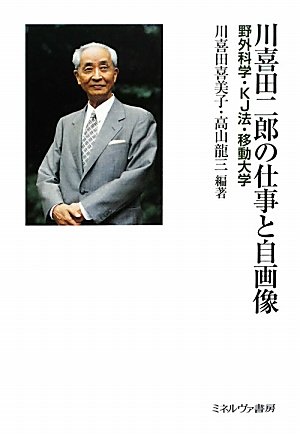- 著者
- 平松 祐司
- 出版者
- 一般社団法人 日本アレルギー学会
- 雑誌
- アレルギー
- 巻号頁・発行日
- vol.63, no.1, pp.6-13, 2014
- 著者
- 前田 幸男
- 出版者
- 北海道大学スラブ・ユーラシア研究センター内 境界研究ユニット = Eurasia Unit for Border Reaseach (Japan)
- 雑誌
- 境界研究 (ISSN:21856117)
- 巻号頁・発行日
- vol.8, pp.89-116, 2018-03-30
1 0 0 0 OA 本草類方10卷
- 著者
- 清年希尭撰
- 出版者
- 黄曉峰刊 (處順堂藏板)
- 巻号頁・発行日
- vol.[6], 1735
1 0 0 0 戦後復興期新宿駅前における和田組マーケットの形成と変容
- 著者
- 石榑 督和
- 出版者
- 日本建築学会
- 雑誌
- 日本建築学会計画系論文集 (ISSN:13404210)
- 巻号頁・発行日
- vol.82, no.733, pp.793-803, 2017
This study examined the formation and transformation process of the Wadagumi Market constructed facing the Shinjuku Station during the post-war reconstruction period, as well as the changes in the main constituents of the market. The study examined the urban fabric of the Wadagumi Market and its surrounding area that were reconstructed every few years from the 1930s to the 1960s. Furthermore, the changes in land ownership were examined, and by comparing both, the change in the urban fabric of the market and the land ownership, the relationship between spatial changes and land rights are discussed.<br> The district examined in this study has the following three characteristics. First, the nature of the district was different in the pre-war and post-war periods. The district was lined with warehouses and theaters pre-war, but post-war it was transformed by shops lining the entire district. Second, among the markets that originated as black markets in the neighborhood of the Shinjuku Station, this district was among the earliest to have market organization carried out by land-readjustment projects for war-damage reconstruction. Third, while the Wadagumi Market was constructed by one constituent, it had three types of rights related to building use. The following were the findings of the study.<br> First, the Wadagumi Market straddled three city blocks and the building use rights differed for the markets of each block, being short-term leasing, long-term leasing, and building purchase, respectively. In the land-readjustment project for war-damage reconstruction, each of these three types of market were organized and relocated on land that was offered as a substitute. One of the markets that was relocated developed into what is today Shinjuku Golden Gai.<br> Second, the control of the market by Wadagumi officials continued even after the Wadagumi was dissolved in July 1947. There was repeated reorganization by the proprietors, but the Wadagumi officials continuously assumed leadership.<br> Third, there was dissolution of large tracts of privately owned land. The study examined the process by which the district concerned, which was owned by one constituent in 1930, was subdivided in the post-war reconstruction process and multiple landowners came to possess the land.
- 著者
- 大川 博徳
- 出版者
- 三重大学
- 雑誌
- 三重大学教育学部研究紀要. 自然科学 (ISSN:03899225)
- 巻号頁・発行日
- vol.39, pp.59-64, 1988
著者らが最近開発したガスクロマトグラフ法を用いて、いわゆる山菜を含む25品目の生野菜中の水溶性及び総シュウ酸の定量を行った。「つるな」には極めて高いシュウ酸が含まれており、次いで、「ルバーブ」、「みょうが」、「しょうが」、「つるむらさき」及び「しそ」が高いシュウ酸量を示した。シュウ酸含量は、いわゆる「あく」のある山菜として知られる「わらび」、「ぜんまい」及び「やまごぼう」では何れも十数mg%と少なく、「わさび」及び「つくし」ではごく僅かで数mg%であった。Soluble and total oxalic acids in 25 vegetables, including 'sansai' were determined by the gas chromatographic method which had been established by the author and colleagues. New Zealand spinach contained the highest quantity of oxalic acid. Oxalic acid contents were, higher in 'Rhubarb', 'Myōga', 'Ginger', 'Basella' and 'Perillas', lower in 'Pracken', 'Roral fern' and 'Yamagobō', and very low in 'Wasabi' and 'Field horsetail'.
1 0 0 0 OA [藤田幽谷書簡]
- 著者
- [藤田幽谷] [著]
- 巻号頁・発行日
- vol.[225], 1800
- 著者
- 佐野 仁美
- 出版者
- 京都橘大学研究紀要編集委員会
- 雑誌
- 京都橘大学研究紀要 = Memoirs of Kyoto Tachibana University (ISSN:18830307)
- 巻号頁・発行日
- no.41, pp.117-131, 2015-02-27
1 0 0 0 OA 拾壱番組木挽町五丁目六丁目七丁目類焼場絵図面
- 出版者
- 写
1 0 0 0 OA 攝津徴書
- 著者
- [浅井幽清] [編]
- 巻号頁・発行日
- vol.巻7-8, 1800
1 0 0 0 OA 行道稿本
- 巻号頁・発行日
- vol.第1冊, 1800
1 0 0 0 川喜田二郎の仕事と自画像 : 野外科学・KJ法・移動大学
- 著者
- [川喜田二郎著] 川喜田喜美子 高山龍三編著
- 出版者
- ミネルヴァ書房
- 巻号頁・発行日
- 2010
1 0 0 0 右母指爪甲遠位部欠損例の手指機能とネイルチップ装着の効果
- 著者
- 志水 宏行 椎名 喜美子
- 雑誌
- 作業療法 = The Journal of Japanese Occupational Therapy Association (ISSN:02894920)
- 巻号頁・発行日
- vol.22, 2003-05-15
- 著者
- 後藤 謙和
- 出版者
- 日本食品衛生協会
- 雑誌
- 食品衛生研究 (ISSN:05598974)
- 巻号頁・発行日
- vol.53, no.1, pp.9-17, 2003-01
1 0 0 0 IR 中国社会の宿痾とは? なぜ民主化は進まないのか (中国 滅亡への法則)
- 著者
- 梶谷 懐
- 出版者
- 文藝春秋
- 雑誌
- 文藝春秋special
- 巻号頁・発行日
- vol.10, no.3, pp.168-175, 2016
1 0 0 0 IR 現代中国と「アジア的なもの」への視点 : 瀬戸宏氏の批判に答える
- 著者
- 梶谷 懐
- 出版者
- 情況出版株式会社
- 雑誌
- 情況. 第四期 : 変革のための総合誌
- 巻号頁・発行日
- vol.6, no.1, pp.205-220, 2017
1 0 0 0 マイクロチップ装着推進活動の現状と課題 (特集 マイクロチップ)
- 著者
- 横山 隆一
- 出版者
- インターズー
- 雑誌
- Clinic note (ISSN:18803458)
- 巻号頁・発行日
- vol.3, no.4, pp.25-27, 2007-04
1 0 0 0 企画展示「1968年」 : 無数の問いの噴出の時代
- 著者
- 人間文化研究機構国立歴史民俗博物館編集
- 出版者
- 人間文化研究機構国立歴史民俗博物館
- 巻号頁・発行日
- 2017
1 0 0 0 OA 鉄道の運行システムにおける情報処理技術の動向:鉄道信号システムの革新
1 0 0 0 OA 麻布十番商店街の地域診断 : 江戸街・十番・エトランゼ
- 著者
- 服部 [ケイ]二郎
- 出版者
- 立正大学
- 雑誌
- 立正大学文学部論叢 (ISSN:0485215X)
- 巻号頁・発行日
- vol.77, pp.23A-66A, 1983-12-15
- 被引用文献数
- 1

